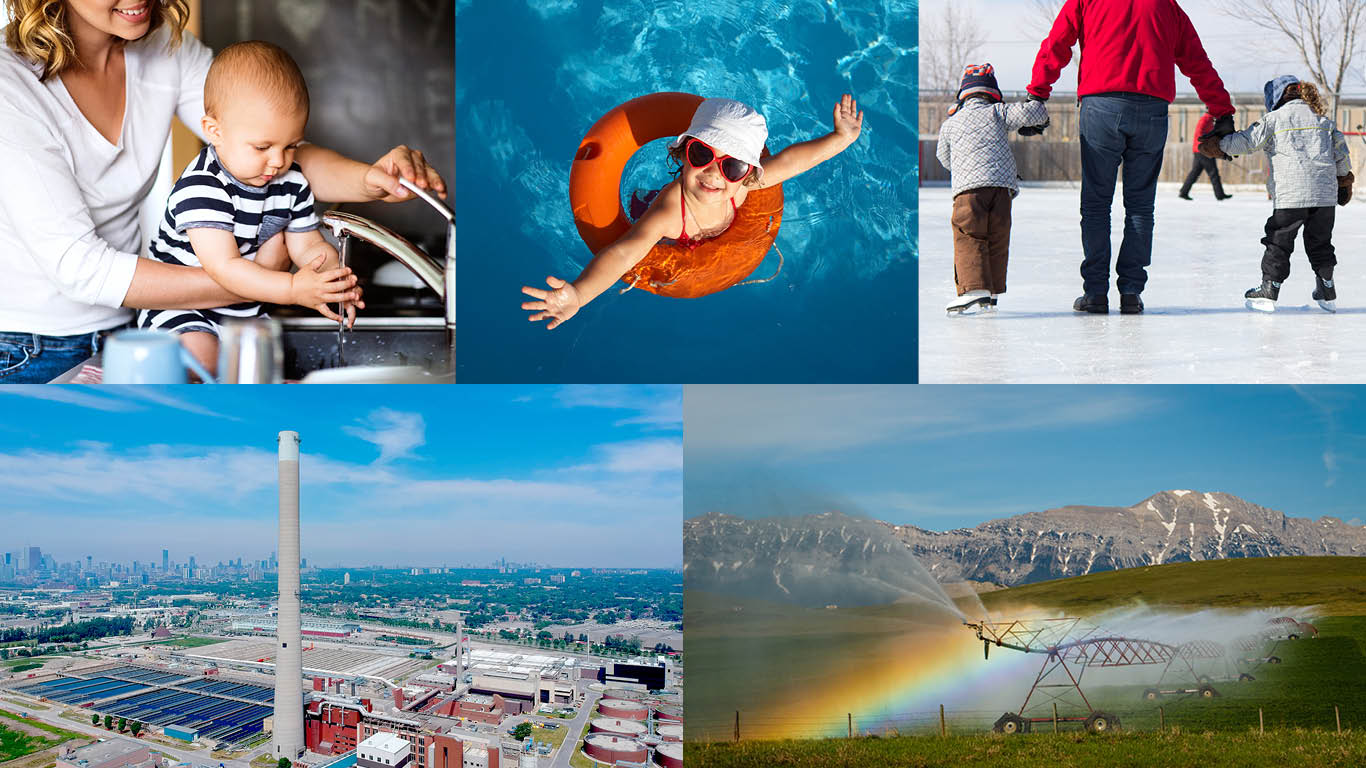
Canada is blessed with water. We have the longest coastline in the world and the third highest volume of renewable fresh water. To celebrate World Water Day, let’s dive into some water-related data.
Most of the water Canadians drink comes from a river or lake
Drinking water plants produced 4 869 million cubic metres of potable water in 2021, most of which (88%) was drawn from a river or lake.
Canadian households were the primary water users, with an average of 223 litres used per person per day in 2021—equivalent to 2 678 million cubic metres, or 55% of the drinking water produced.
The volume of household water use rose 8% in 2021, likely reflecting more people working from home during the pandemic.
Nearly all the potable water produced by public utilities in 2021 was treated by filtration and disinfection processes, while 1% of households received untreated water, which came primarily from groundwater sources, unchanged since 2011.
Water is power
Canada’s electricity system is highly reliant on hydroelectricity. From 2016 to 2022, Canada generated on average three-fifths (59.9%) of its total annual electricity from hydroelectric generating stations. For this reason, Canada’s electricity supply, demand and trade are indelibly linked to weather.
Summer 2023 was the hottest on record since 1940 according to Environment and Climate Change Canada, and Western and Central Canada received below or well below average amounts of precipitation in the form of rain, putting a strain on hydroelectricity generation and exports.
Hydroelectricity (-8.4% to 359.3 million MWh) was the largest contributor to the national decline in electricity generation in 2023. While hydro is renewable and generally a reliable source of electricity, it is susceptible to persistent dry conditions. In 2023, three of Canada’s largest hydroelectricity generators, Quebec (-9.3%), British Columbia (-21.5%) and Manitoba (-12.1%), were afflicted by drought or abnormally dry conditions and saw electricity generation drop as a result.
When there is not enough water, irrigation comes into play
Canadian farmers drew 2.2 billion cubic metres of water to irrigate their crops in 2022, up by almost one-quarter (23%) from a year earlier. The increase was mostly due to dry conditions in Alberta.
Indeed, Alberta had the largest area of irrigated farmland (549 934 hectares) in 2022, accounting for almost three-quarters of the total area of land that was irrigated nationally.
Field (50%) and forage (39%) crops used the most irrigation water across the country in 2022, with fruit (7%) and vegetable (4%) crops accounting for the rest.
Canadian household efforts to conserve water
Millions of Canadian households have taken steps to conserve water. Just under half reported having a low volume toilet (49%) or low flow shower (46%) in 2021, while two in five households with municipally supplied water had a water meter (40%).
Water is desirable
Living close to the ocean offers many advantages, one of which is milder Canadian winters compared with the interior. Some of Canada’s fastest growing communities from 2016 to 2021, such as Langford (+31.8) and Southern Gulf Islands (+28.9%) in British Columbia, are located close to the sea.
In 2021, close to one in six Canadians (14.9%) lived within 10 km of the coastline.
Canada's coastal population grew by 5.3% from 2016 to 5.5 million people in 2021. Approximately three-quarters of this growth occurred on the Pacific Coast. Over 3.2 million Canadians lived on the Pacific Coast in 2021 and over 2.2 million on the Atlantic Coast.
Keeping water clean
Water is perhaps the ultimate “recyclable” material and once used by humans, is returned to the environment.
Just under 5 800 million cubic metres of sewage flowed through municipal wastewater systems in Canada in 2020, equivalent to the volume of water that flows over Niagara Falls for approximately three weeks. These systems receive sewage discharged across Canada—from homes and factories, as well as shops, hospitals, and schools. The volume also includes storm water that enters the collection pipes which convey the wastewater to treatment plants before being released into lakes, rivers, or oceans.
Approximately 102 million cubic metres of wastewater (3.7% of total wastewater) were discharged back into the environment without being treated in 2020.
Too much water
Floods are increasing in frequency and severity across Canada. In recent years, governments and businesses have been investing increasingly significant resources into flood protection measures.
From 2018 to 2022, spending on flood protection infrastructure more than doubled to $1.9 billion. In 2022, Ontario had the highest expenditures ($1.0 billion), accounting for more than half of the total nationwide.
Water is fun
Thousands of facilities or structures have been constructed across the country that allow Canadians to frolic in water or on “frozen” water.
In 2020, we counted 4,275 outdoor skating rinks for Canadians to glide on during the winter months, while in the summer, there were 3,144 splash pads or wading pools and 1,114 outdoor pools. Not that we need to be reminded, but it should be noted that many of these facilities were temporarily closed during various waves of the pandemic.
Year-round, there were 2,569 indoor skating arenas of various sizes, 801 indoor pools and 725 curling rinks.

StatsCAN app
Did you know you can read StatsCAN Plus articles and more on the StatsCAN app? If you’re already using the app, let us know what you think by leaving a review in the App Store and Google Play.
Contact information
For more information, contact the Statistical Information Service (toll-free 1-800-263-1136; 514-283-8300; infostats@statcan.gc.ca) or Media Relations (statcan.mediahotline-ligneinfomedias.statcan@statcan.gc.ca).
